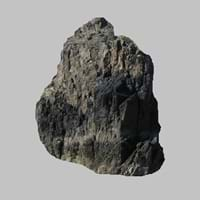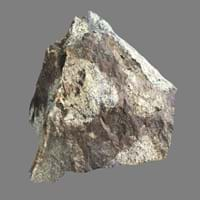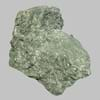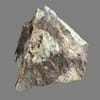Definition
Metapelite is an old and currently not widely used field geological term for a clay rich fine-grained clastic sediment or sedimentary rock, i.e. mud or a mudstone
Very fine grained fault rock which is composed of glassy matrix that often contains inclusions of wall-rock fragments.
Discoverer
Unknown
Unknown
Etymology
From Pelos or clay in Greek
From pseudo- + tachylite, a glassy rock generated by frictional heat within faults.
Class
Metamorphic Rocks
Metamorphic Rocks
Sub-Class
Durable Rock, Medium Hardness Rock
Durable Rock, Hard Rock
Group
Not Applicable
Not Applicable
Other Categories
Coarse Grained Rock, Fine Grained Rock, Medium Grained Rock, Opaque Rock
Fine Grained Rock, Opaque Rock
Color
Dark Greenish - Grey, Green, Light Green, Light Greenish Grey
Black, Brown, Colourless, Green, Grey, Pink, White
Durability
Durable
Durable
Scratch Resistant
Yes
Yes
Appearance
Banded
Dull and Soft
Interior Uses
Decorative Aggregates, Interior Decoration
Decorative Aggregates, Entryways, Interior Decoration
Exterior Uses
As Building Stone, As Facing Stone
As Building Stone, As Facing Stone, Garden Decoration
Other Architectural Uses
Curbing
Curbing
Construction Industry
Cement Manufacture, Construction Aggregate, for Road Aggregate
As Dimension Stone, Cement Manufacture, for Road Aggregate, Making natural cement
Medical Industry
Not Yet Used
Not Yet Used
Antiquity Uses
Artifacts
Artifacts, Monuments
Commercial Uses
Commemorative Tablets, Creating Artwork
Creating Artwork, Gemstone
Types
Not Available
Not Available
Features
Easily splits into thin plates, It is One of the Oldest, Strongest and Hardest Rock
Host Rock for Lead
Archaeological Significance
Monuments
Not Yet Used
Used
Famous Monuments
Not Applicable
Data Not Available
Sculpture
Not Yet Used
Not Yet Used
Famous Sculptures
Not Applicable
Not Applicable
Pictographs
Used
Not Used
Petroglyphs
Used
Not Used
Figurines
Not Yet Used
Not Yet Used
Formation
Due to change in environmental conditions, rocks are heated and pressurized deep inside the Earth's surface. Metapelite is formed from the extreme heat caused by magma or by the intense collisions and friction of tectonic plates.
Due to change in environmental conditions, rocks are heated and pressurized deep inside the Earth's surface. Pseudotachylite is formed from the extreme heat caused by magma or by the intense collisions and friction of tectonic plates.
Mineral Content
Albite, Chlorite, Quartz
Iron Oxides, Pyroxene, Quartz, Stishovite, Sulfides
Compound Content
Aluminium Oxide, CaO, MgO
Carbon Dioxide, Silicon Dioxide, Sulfur Dioxide, Sulphur
Types of Metamorphism
Not Applicable
Burial Metamorphism, Cataclastic Metamorphism, Contact Metamorphism
Types of Weathering
Biological Weathering, Chemical Weathering, Mechanical Weathering
Not Applicable
Types of Erosion
Chemical Erosion, Coastal Erosion, Water Erosion, Wind Erosion
Not Applicable
Grain Size
Medium to Fine Coarse Grained
Very fine-grained
Streak
Unknown
Light to dark brown
Porosity
Highly Porous
Less Porous
Compressive Strength
Not Available
Cleavage
Not Available
Irregular
Toughness
Not Available
Not Available
Specific Gravity
3.4-3.7
2.46-2.86
Transparency
Opaque
Transparent to Translucent
Density
0-300 g/cm3
2.7-2.9 g/cm3
Resistance
Heat Resistant, Impact Resistant, Pressure Resistant
Heat Resistant
Deposits in Eastern Continents
Asia
Not Yet Found
South Korea
Africa
Western Africa
Western Africa
Europe
United Kingdom
Great Britain, Switzerland
Others
Not Yet Found
Not Yet Found
Deposits in Western Continents
North America
Not Available
Not Yet Found
South America
Brazil, Colombia, Ecuador
Not Yet Found
Deposits in Oceania Continent
Australia
Central Australia, Western Australia
Central Australia, Western Australia
All about Metapelite and Pseudotachylite Properties
Know all about Metapelite and Pseudotachylite properties here. All properties of rocks are important as they define the type of rock and its application. Metapelite and Pseudotachylite belong to Metamorphic Rocks.Texture of Metapelite is Foliated whereas that of Pseudotachylite is Quench. Metapelite appears Banded and Pseudotachylite appears Dull and Soft. The luster of Metapelite is earthy while that of Pseudotachylite is vitreous. Metapelite is available in dark greenish - grey, green, light green, light greenish grey colors whereas Pseudotachylite is available in black, brown, colourless, green, grey, pink, white colors. The commercial uses of Metapelite are commemorative tablets, creating artwork and that of Pseudotachylite are creating artwork, gemstone.










